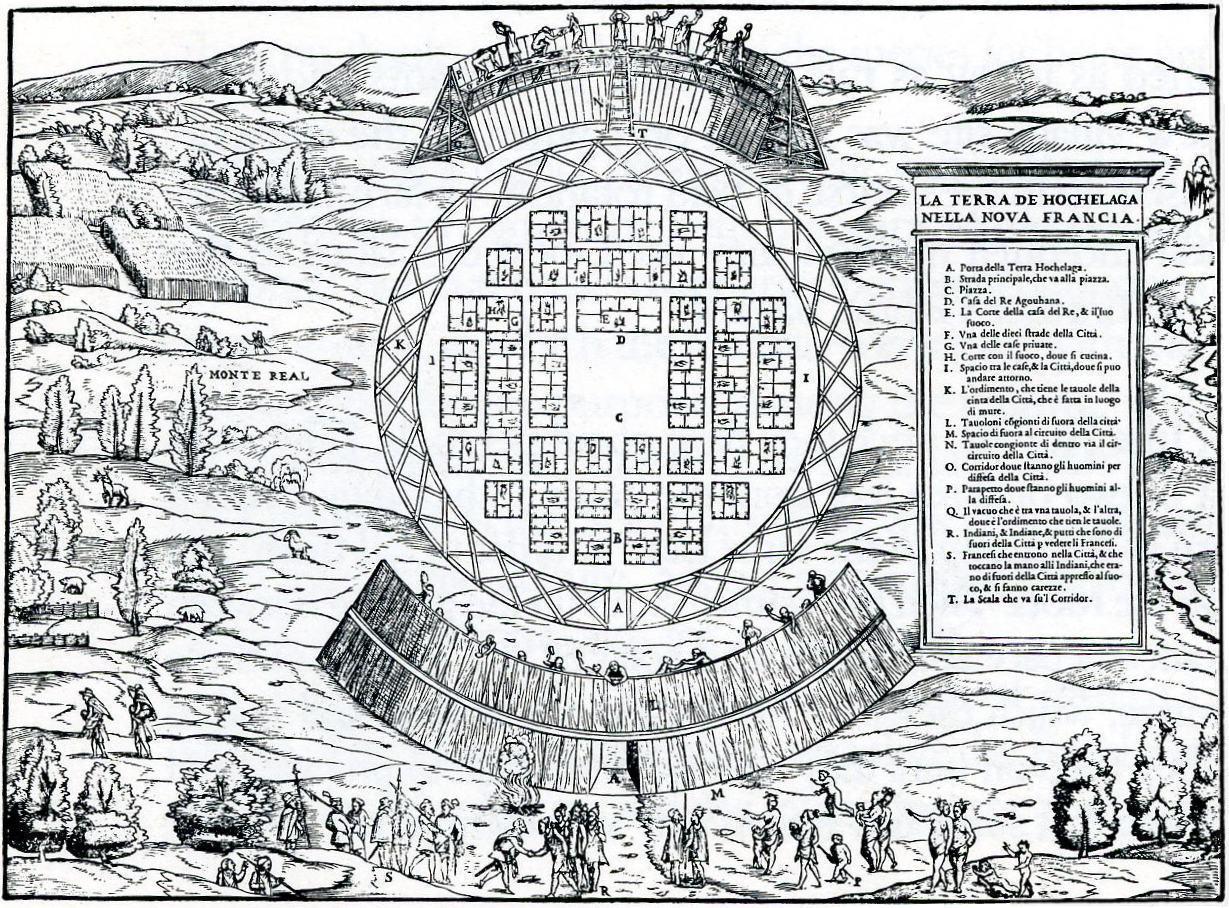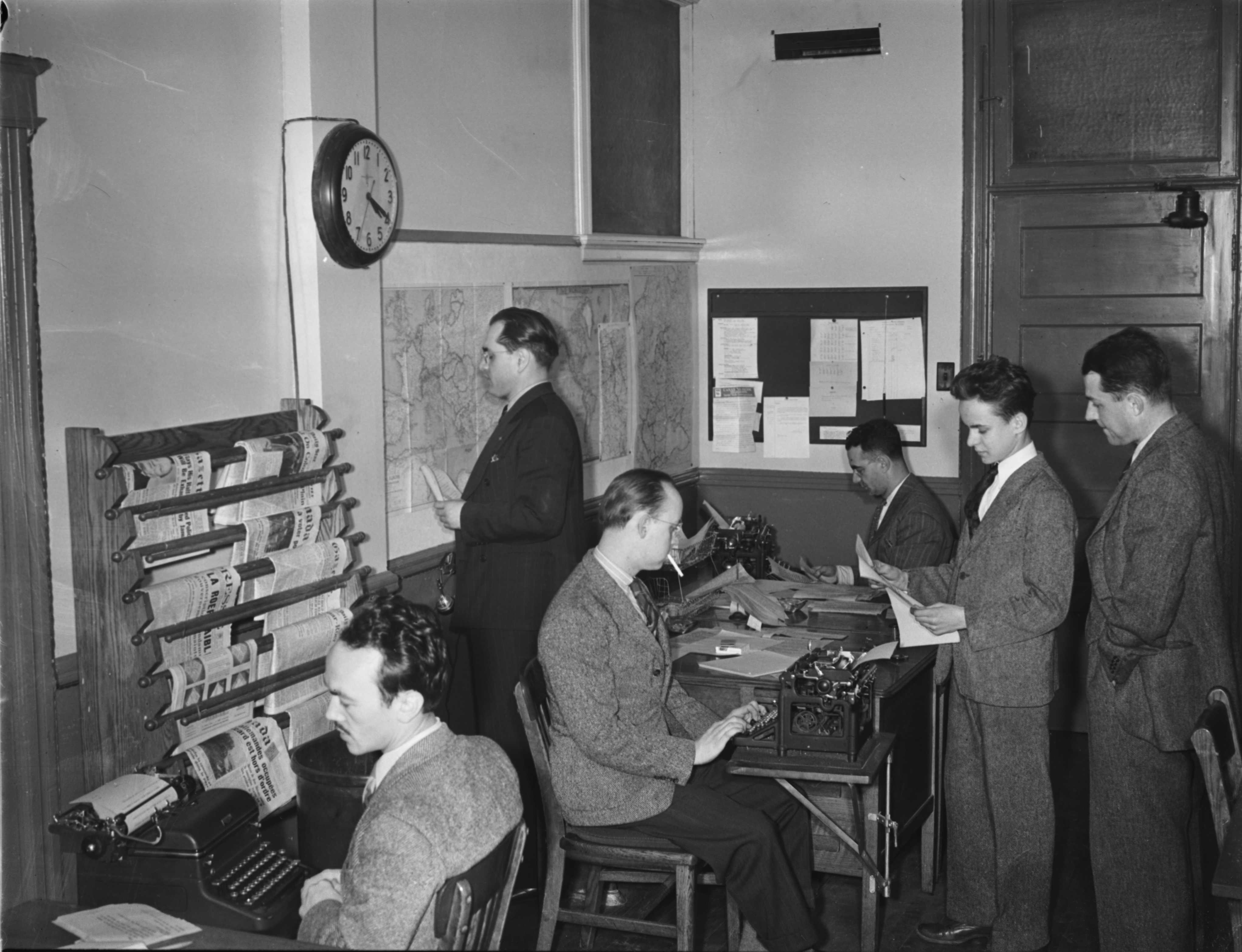|
Mount Royal Cross
The Mount Royal Cross is a monument on top of Mount Royal in Montreal, Quebec, Canada. It stands at the northeastern peak of the mountain and overlooks the eastern part of the Island of Montreal. History Paul Chomedey de Maisonneuve, founder of Fort Ville-Marie, erected the first cross on Mount Royal in 1643, thereby fulfilling his vow to the Virgin Mary in his prayers to end a disastrous flood. An illuminated cross was installed in 1924 by the Société Saint-Jean-Baptiste and was given to the city in 1929. The city assumed responsibility for maintenance and operation of the cross since then, but there is no documentation supporting the transaction prior to June 2004, when the Montreal City Council approved cessation of the monument. The city also took advantage of this to perform additional work to improve access to the site and install new park furniture. The renovation cost Can$2 million, paid by the City and the Ministère de la culture, des communications et de la conditi ... [...More Info...] [...Related Items...] OR: [Wikipedia] [Google] [Baidu] |
Mount Royal
Mount Royal (french: link=no, Mont Royal, ) is a large intrusive rock hill or small mountain in the city of Montreal, immediately west of Downtown Montreal, Quebec, Canada. The best-known hypothesis for the origin of the name Montreal is the hill is the namesake for the city. The hill is part of the Monteregian Hills situated between the Laurentians and the Appalachian Mountains. It gave its Latin name, ''Mons Regius'', to the Monteregian chain. The hill consists of three peaks: Colline de la Croix (or Mont Royal proper) at , Colline d'Outremont (or Mount Murray, in the borough of Outremont) at , and Westmount Summit at elevation above mean sea level. Geology Mount Royal is the deep extension of a vastly eroded ancient volcanic complex, which was probably active about 125 million years ago. [...More Info...] [...Related Items...] OR: [Wikipedia] [Google] [Baidu] |
Fête Nationale Du Québec
Saint-Jean-Baptiste Day (french: Fête de la Saint-Jean-Baptiste, la Saint-Jean, Fête nationale du Québec), also known in English as ''St John the Baptist Day'', is a holiday celebrated on June 24 in the Canadian province of Quebec and by French Canadians across Canada and the United States. It was brought to Canada by French settlers celebrating the traditional feast day of the Nativity of Saint John the Baptist. It was declared a public holiday in QuebecQuébec 'national Holiday Act' defining the holiday, http://www2.publicationsduquebec.gouv.qc.ca/dynamicSearch/telecharge.php?type=2&file=%2F%2FF_1_1%2FF1_1_A.htmGouvernement du Québec.National Holiday", in the site of the ''Commission des normes du travail'', June 17, 2008. Retrieved June 29, 2008Gouvernement du Québec., in ''CanLII'', Federation of Law Societies of Canada, updated to May 1, 2008. Retrieved June 29, 2008 in 1925, with publicly financed events organized province-wide by a ''Comité organisateur de la fête na ... [...More Info...] [...Related Items...] OR: [Wikipedia] [Google] [Baidu] |
Outdoor Sculptures In Montreal
Outdoor(s) may refer to: * Wilderness *Natural environment *Outdoor cooking *Outdoor education *Outdoor equipment *Outdoor fitness *Outdoor literature *Outdoor recreation *Outdoor Channel, an American pay television channel focused on the outdoors See also * * * ''Out of Doors'' (Bartók) *Field (other) *Outside (other) Outside or Outsides may refer to: General * Wilderness * Outside (Alaska), any non-Alaska location, as referred to by Alaskans Books and magazines * ''Outside'', a book by Marguerite Duras * ''Outside'' (magazine), an outdoors magazine Film, ... *'' The Great Outdoors (other)'' {{disambiguation ... [...More Info...] [...Related Items...] OR: [Wikipedia] [Google] [Baidu] |
Monuments And Memorials In Montreal
This is a partial list of public art in Montreal, Quebec, Canada. Artworks References External links Art Public Montréal - more sculpture in Montreal {{DEFAULTSORT:Montreal, Monuments and memorials in History of Montreal |
Monumental Crosses In Canada
Monumental may refer to: * In the manner of a monument Places * Monumental Island, Nunavut, Canada * Monumental Island, New Zealand * Monumental (Barcelona Metro), a station in Barcelona, Catalonia, Spain * La Monumental, the Plaza Monumental de Barcelona, a stadium bullring in the city of Barcelona, Catalonia, Spain * Estadio Monumental Antonio Vespucio Liberti, or El Monumental, an Argentinian stadium in Buenos Aires * Plaza Monumental de Morelia, Michoacan, Mexico * Monumental Square (Alcaraz), Spain * Monumental Church, Richmond, Virginia, USA Other uses * ''Monumental'' (album), a 2011 album by Pete Rock and Smif-N-Wessun, and its title track * ''Monumental'' (Kadebostany album), 2018 * '' Monumental: In Search of America's National Treasure'', a 2012 American documentary film * Monumental Life Insurance Company See also *Monumental dance, a dance style introduced by German musical band ''E Nomine'' *Estadio Monumental (other) *Cine Monumental (other) *M ... [...More Info...] [...Related Items...] OR: [Wikipedia] [Google] [Baidu] |
Landmarks In Montreal
A landmark is a recognizable natural or artificial feature used for navigation, a feature that stands out from its near environment and is often visible from long distances. In modern use, the term can also be applied to smaller structures or features, that have become local or national symbols. Etymology In old English the word ''landmearc'' (from ''land'' + ''mearc'' (mark)) was used to describe a boundary marker, an "object set up to mark the boundaries of a kingdom, estate, etc.". Starting from approx. 1560, this understanding of landmark was replaced by a more general one. A landmark became a "conspicuous object in a landscape". A ''landmark'' literally meant a geographic feature used by explorers and others to find their way back or through an area. For example, the Table Mountain near Cape Town, South Africa is used as the landmark to help sailors to navigate around southern tip of Africa during the Age of Exploration. Artificial structures are also sometimes built to ... [...More Info...] [...Related Items...] OR: [Wikipedia] [Google] [Baidu] |
History Of Montreal
The history of the area around what is now known as Montreal, Montreal itself was established in 1642, located in what is now known as the province of Quebec, Canada, spans about 8,000 years. At the time of European contact, the area was inhabited by the St. Lawrence Iroquoians, a discrete and distinct group of Iroquoian-speaking indigenous people. They spoke Laurentian. Jacques Cartier became the first European to reach the area now known as Montreal in 1535 when he entered the village of '' Hochelaga'' on the Island of Montreal while in search of a passage to Asia during the Age of Exploration. Seventy years later, Samuel de Champlain unsuccessfully tried to create a fur trading post but the Mohawk of the Iroquois defended what they had been using as their hunting grounds. A fortress named Ville Marie was built in 1642 as part of a project to create a French colonial empire. Ville Marie became a centre for the fur trade and French expansion into New France until 1760, whe ... [...More Info...] [...Related Items...] OR: [Wikipedia] [Google] [Baidu] |
Christianity In Canada
Christianity is the most adhered to religion in Canada, with 19,373,325 Canadians, or 52.3%, identifying themselves as of the 2021 census. The preamble to the Canadian Charter of Rights and Freedoms refers to God. The monarch carries the title of "Defender of the Faith". The French colonization beginning in the 17th century established a Roman Catholic francophone population in New France, especially Acadia and Lower Canada (now Nova Scotia, New Brunswick and Quebec). British colonization brought waves of Anglicans and other Protestants to Upper Canada, now Ontario. The Russian Empire spread Orthodox Christianity in a small extent to the tribes in the far north and western coasts, particularly hyperborean nomadics like the Inuit. Orthodoxy would arrive in mainland Canada with immigrants from the eastern and southern Austro-Hungarian Empire and western Russian Empire starting in the 1890s; then refugees from the Soviet Union, Eastern Bloc, Greece and elsewhere during the last half o ... [...More Info...] [...Related Items...] OR: [Wikipedia] [Google] [Baidu] |
Montreal Gazette
The ''Montreal Gazette'', formerly titled ''The Gazette'', is the only English-language daily newspaper published in Montreal, Quebec, Canada. Three other daily English-language newspapers shuttered at various times during the second half of the 20th century. It is one of the French-speaking province's last two English-language dailies; the other is the ''Sherbrooke Record'', which serves the anglophone community in Sherbrooke and the Eastern Townships southeast of Montreal. Founded in 1778 by Fleury Mesplet, ''The Gazette'' is Quebec's oldest daily newspaper and Canada's oldest daily newspaper still in publication. The oldest newspaper overall is the English-language '' Quebec Chronicle-Telegraph'', which was established in 1764 and is published weekly. History Fleury Mesplet founded a French-language weekly newspaper called ''La Gazette du commerce et littéraire, pour la ville et district de Montréal'' on June 3, 1778. It was the first entirely French-language newspap ... [...More Info...] [...Related Items...] OR: [Wikipedia] [Google] [Baidu] |
Earth Hour
Earth Hour is a worldwide movement organized by the World Wildlife Fund (WWF). The event is held annually, encouraging individuals, communities, and businesses to turn off non-essential electric lights, for one hour, from 8:00 to 9:00 p.m. on the last Saturday of March, as a symbol of commitment to the planet. It was started as a lights-off event in Sydney, Australia, in 2007. Occasionally, in years when Holy Saturday falls on the last Saturday of March, Earth Hour is moved a week early rather than its usual date. History of Earth Hour Conception and start: 2004–2007 In 2004, confronted with scientific findings, WWF Australia met with advertising agency Leo Burnett Sydney to "discuss ideas for engaging Australians on the issue of climate change". The idea of a large scale switch off was coined and developed in 2006, originally under the working title "The Big Flick". WWF Australia presented their concept to Fairfax Media who, along with Sydney Lord Mayor Clover Mo ... [...More Info...] [...Related Items...] OR: [Wikipedia] [Google] [Baidu] |
Canadian Broadcasting Corporation
The Canadian Broadcasting Corporation (french: Société Radio-Canada), branded as CBC/Radio-Canada, is a Canadian public broadcaster for both radio and television. It is a federal Crown corporation that receives funding from the government. The English- and French-language service units of the corporation are commonly known as CBC and Radio-Canada, respectively. Although some local stations in Canada predate the CBC's founding, CBC is the oldest existing broadcasting network in Canada. The CBC was established on November 2, 1936. The CBC operates four terrestrial radio networks: The English-language CBC Radio One and CBC Music, and the French-language Ici Radio-Canada Première and Ici Musique. (International radio service Radio Canada International historically transmitted via shortwave radio, but since 2012 its content is only available as podcasts on its website.) The CBC also operates two terrestrial television networks, the English-language CBC Television and the F ... [...More Info...] [...Related Items...] OR: [Wikipedia] [Google] [Baidu] |
CBMT
CBMT-DT (channel 6) is a television station in Montreal, Quebec, Canada, broadcasting the English-language service of CBC Television. It is owned and operated by the Canadian Broadcasting Corporation alongside Ici Radio-Canada Télé flagship CBFT-DT (channel 2). Both stations share studios at Maison Radio-Canada on René Lévesque Boulevard East in Downtown Montreal, while CBMT-DT's transmitter is located atop Mount Royal. History CBMT first signed on the air on January 10, 1954, as Montreal's second television station; previously, English and French-language programs had shared time on CBFT, Canada's first television station. By the end of 1953, Canada had about a dozen television stations either licensed or under construction, and American competition was about to arrive in Montreal with the construction of WCAX-TV in Burlington, Vermont and WIRI-TV in Plattsburgh, New York (now known as WPTZ). The CBC decided that it was imperative to stop time-sharing in English and in Fre ... [...More Info...] [...Related Items...] OR: [Wikipedia] [Google] [Baidu] |


.jpg)




